Physical Education > QUESTIONS & ANSWERS > Crossfit Level 2 Latest Updated 2023 Already Graded A (All)
Crossfit Level 2 Latest Updated 2023 Already Graded A
Document Content and Description Below
Crossfit Level 2 Latest Updated 2023 Already Graded A Push Press Progressions ✔✔dip & hold, dip & drive slow, dip & drive fast, push press Push Jerk Progressions ✔✔jump & land (hands at sid... es), jump & land (hands at shoulders), jump & extend arms after hips extend, push jerk Sumo DL High Pull Progressions ✔✔Sumo DL, Sumo DL shrug slow, sumo DL shrug fast, SDHP Med Ball Clean Progressions ✔✔DL, DL shrug fast, FS, Pull Under, med ball clean Trainer's ability to coach others (based on 6 areas) ✔✔teaching, seeing, correcting, group management, presence & attitude, demonstration Teaching ✔✔the ability to effectively articulate & instruct the mechanics of each movement Seeing ✔✔The ability to discern good from poor movement mechanics and identify both gross and subtle faults whether athlete is in motion or static Static Faults ✔✔faults that occur near end ranges of motion- starting, receiving, or finishingDynamic Faults ✔✔athlete moving btw the static positions- ex. not reaching full hip extension in drive of the clean, push early in push press, initiating squat with knees Profile view ✔✔most useful view to watch an athlete Correcting ✔✔the ability to facilitate better mechanics using visual, verbal, and/or tactile cues Ability to correct depends on (4 things) ✔✔use successful cues, know multiple corrections for each fault, triage faulty movement, balance critique w/ praise Function of a cue ✔✔to help athlete execute perfect mechanics, NOT to perfectly describe the mechanics of the movement Qualities of a good cue ✔✔short, specific, actionable 3 steps to developing a good cue ✔✔1. identify fault 2. identify what is out of place 3. give direction to that body part Verbal cue ✔✔tell specific instruction Visual cue ✔✔create contrasting images btw current & desired positioning Tactile cure ✔✔use physical targets to achieve proper mechanics Triaging faults ✔✔assigning urgency to faults, ordering based on severity of deviation from ideal & athlete's capacity relative to the task Group management ✔✔ability to organize and manage both at a micro level (class) and macro level (gym); managing time well, organization of space, equipment and participants, adhere to schedule etc. Presence & attitude ✔✔ability to create a positive and engaging learning environment Demonstration ✔✔the ability to provide athletes w/ an accurate visual example Common movement themes for functional movements ✔✔midline stabilization, core to extremity movement, balance about the frontal plane, posterior chain engagement, sound hip function, active shoulders, full ROM about a joint, effective stance or grip Midline ✔✔relationship of the spine and pelvis during functional movement midline stabilization ✔✔athlete's capacity to prevent movement from this neutral spinal position; synonymous w/ core strength Creates midline stabilization ✔✔engagement of abs, internal & external obliques, and spinal errectors Deviations from neutral spine ✔✔Flexion, extension Most risky deviation from neutral/ midline stabilization ✔✔loss of neutral spine during movement Core to Extremity movements ✔✔a sequence of muscular contraction beginning w/ large force producing, low velocity muscles of the core and hips and ends w/ small force producing, high velocity muscles of the extremities Muscles more likely of injury ✔✔smaller muscle groups and tendons/ligaments Balance about the frontal plane ✔✔athletes movements accommodate the object and may or may not be characterized by straight lines; frontal plane divides athlete into anterior/posterior halves (bisects athlete at mid foot Posterior chain ✔✔hamstrings, glutes, spinal errectors Posterior chain engagement ✔✔balance of pressure btw balls of feet and heels; creates increased power generation, helps keep knees in line w/ toes, promoted midline stabilization and balance about frontal plane Sound hip function ✔✔athletes ability to flex & extend hip to maximize contribution to movement Major safety issues w/ slow or incomplete hip extension ✔✔none Poor hip function ✔✔muted hip, lack of hip extension, slow hip extension muted hip ✔✔never closes/flexes; permanently open hip Active shoulders ✔✔scapular position & stabilization, applying force in direction opposite the load Full ROM about a joint ✔✔allows greater compliment of musculature to be used, preserves joint health, flexibility and strength Effective stance/ grip ✔✔hand & foot position during a movement When to use narrow stance ✔✔DL, presses, & oly lifts When to use wider stance ✔✔squatting major safety concerns from lack of effective stance/grip ✔✔none Assessing safety & performance/ risk ✔✔athletic capacity, loading, positioning, assigned tasks Variance ✔✔intended variation of functional movement, loads, rep schemes, and time durations methods of scaling ✔✔movement functions, loading paramenters, time frame, rep volume Populations in need of scaling ✔✔beginners, intermediate, advanced, injured athletes Common programming pitfalls ✔✔lack of regular assessment, incorrectly applied variance, lack of higher skill development, excessive volume, thinking CF Games is standard Examples of variance not applied correctly ✔✔hopper, biasing, never repeating workouts, too much accessory work Components of class ✔✔warm-up, workout, cool down General Warm up ✔✔increase core temp and blood flow to muscles Specific Warm-up ✔✔build and refine proper mechanics, prep mentally & physically Heavy days ✔✔necessary, should be programmed once a week or once every 2 cycles Working reps of heavy sets ✔✔> 80% 1rm; 7-25 working reps [Show More]
Last updated: 2 years ago
Preview 1 out of 8 pages
.png)
Buy this document to get the full access instantly
Instant Download Access after purchase
Buy NowInstant download
We Accept:

Also available in bundle (1)
.png)
CrossFit Bundled Exams Questions and Answers 100% Pass
CrossFit Bundled Exams Questions and Answers 100% Pass
By Nutmegs 2 years ago
$38.5
17
Reviews( 0 )
$10.00
Can't find what you want? Try our AI powered Search
Document information
Connected school, study & course
About the document
Uploaded On
Mar 17, 2023
Number of pages
8
Written in
Additional information
This document has been written for:
Uploaded
Mar 17, 2023
Downloads
0
Views
118


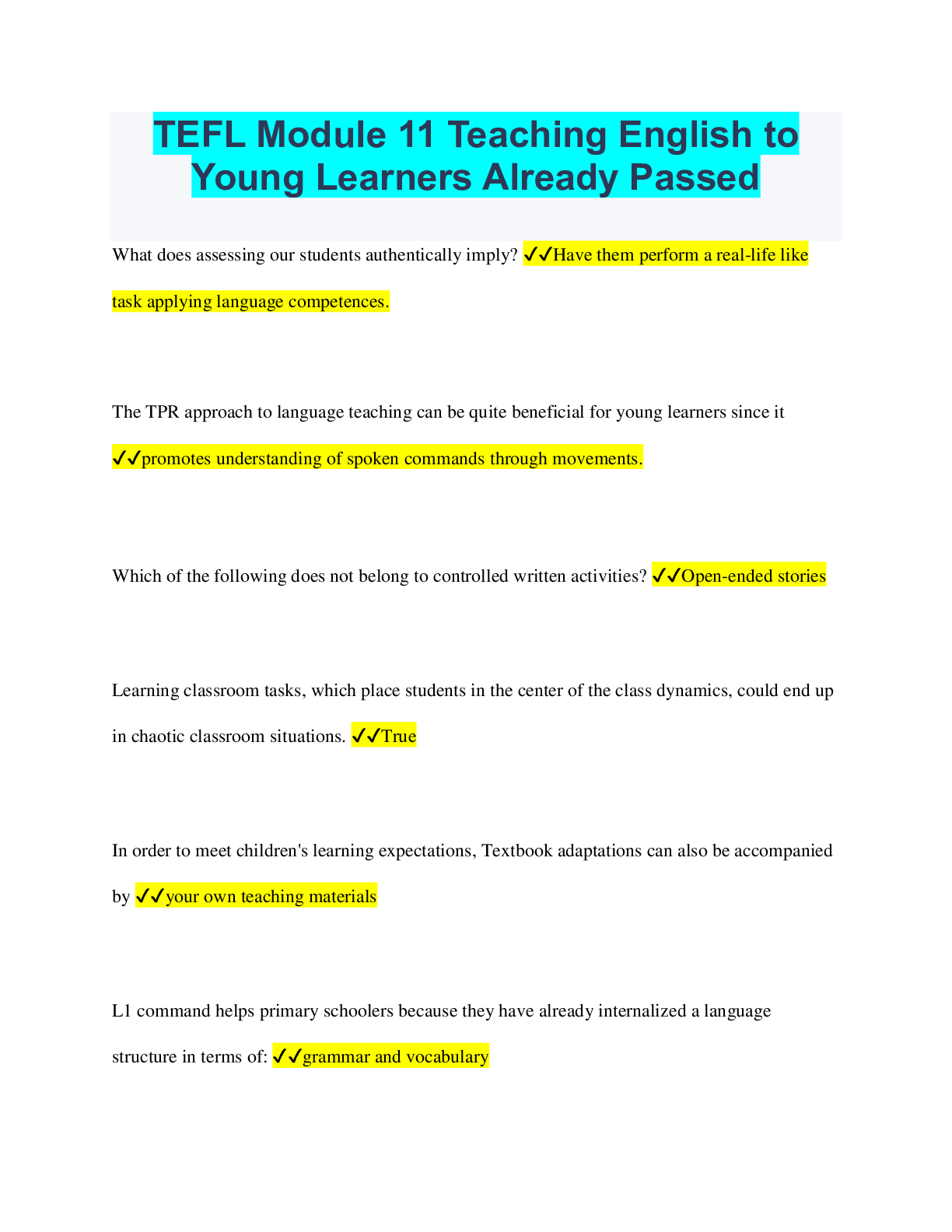
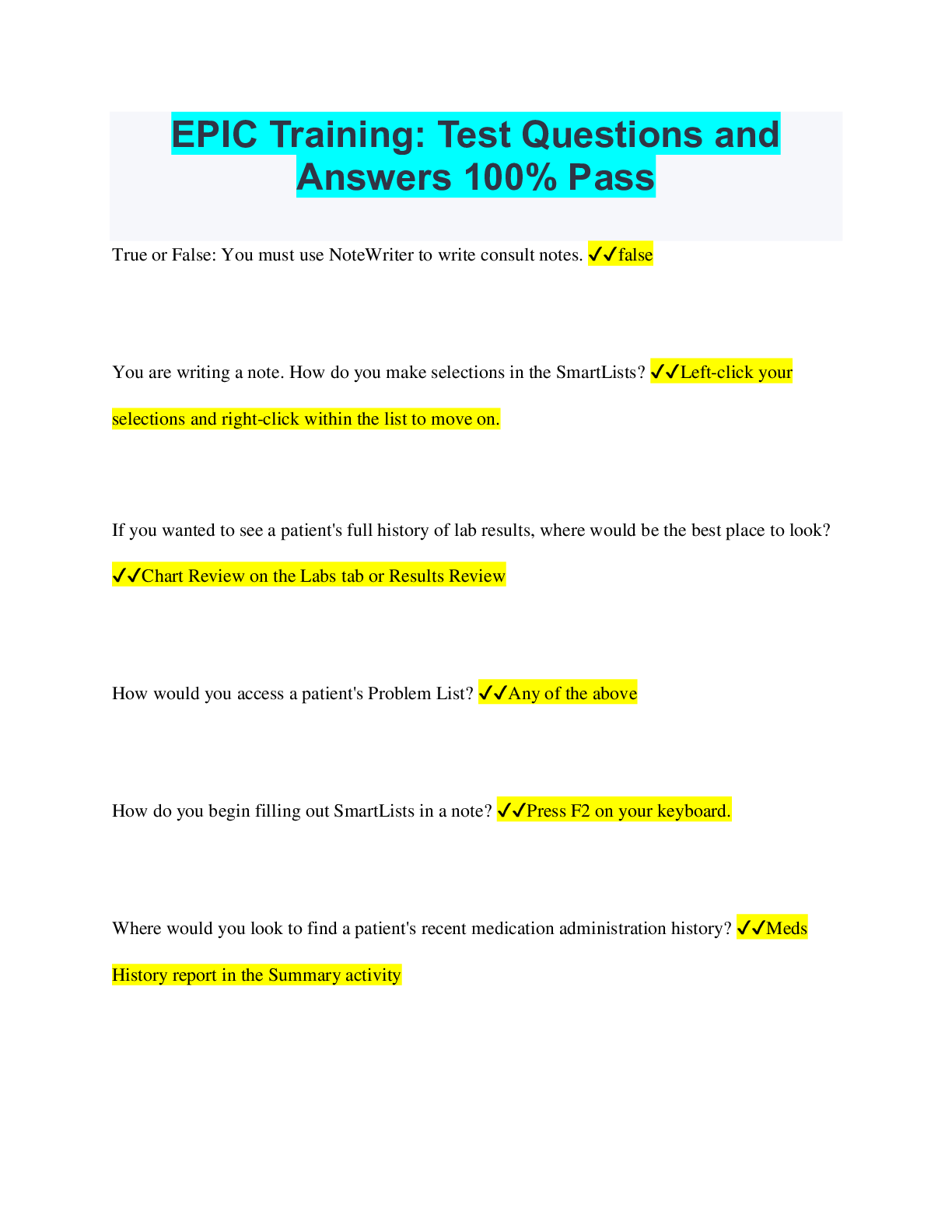
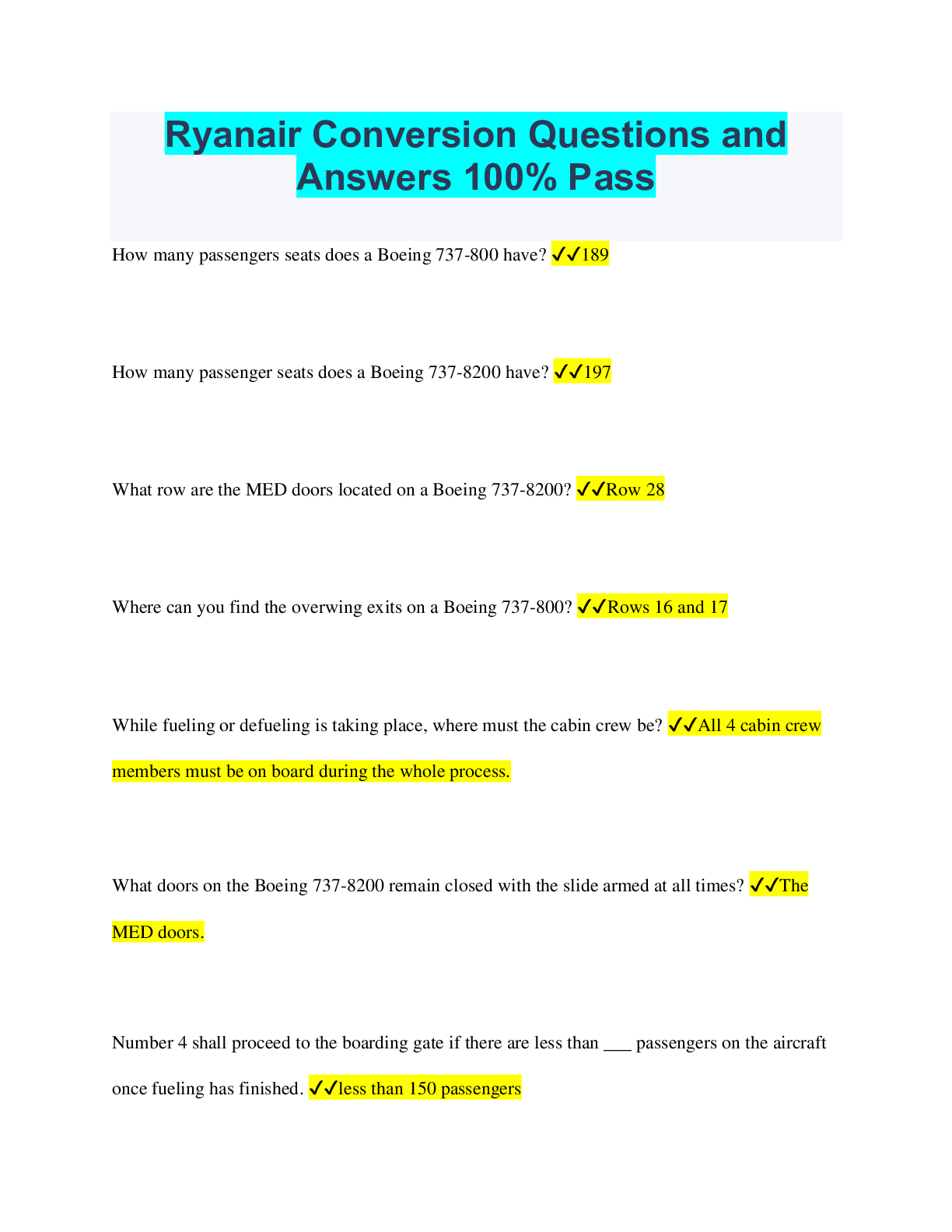
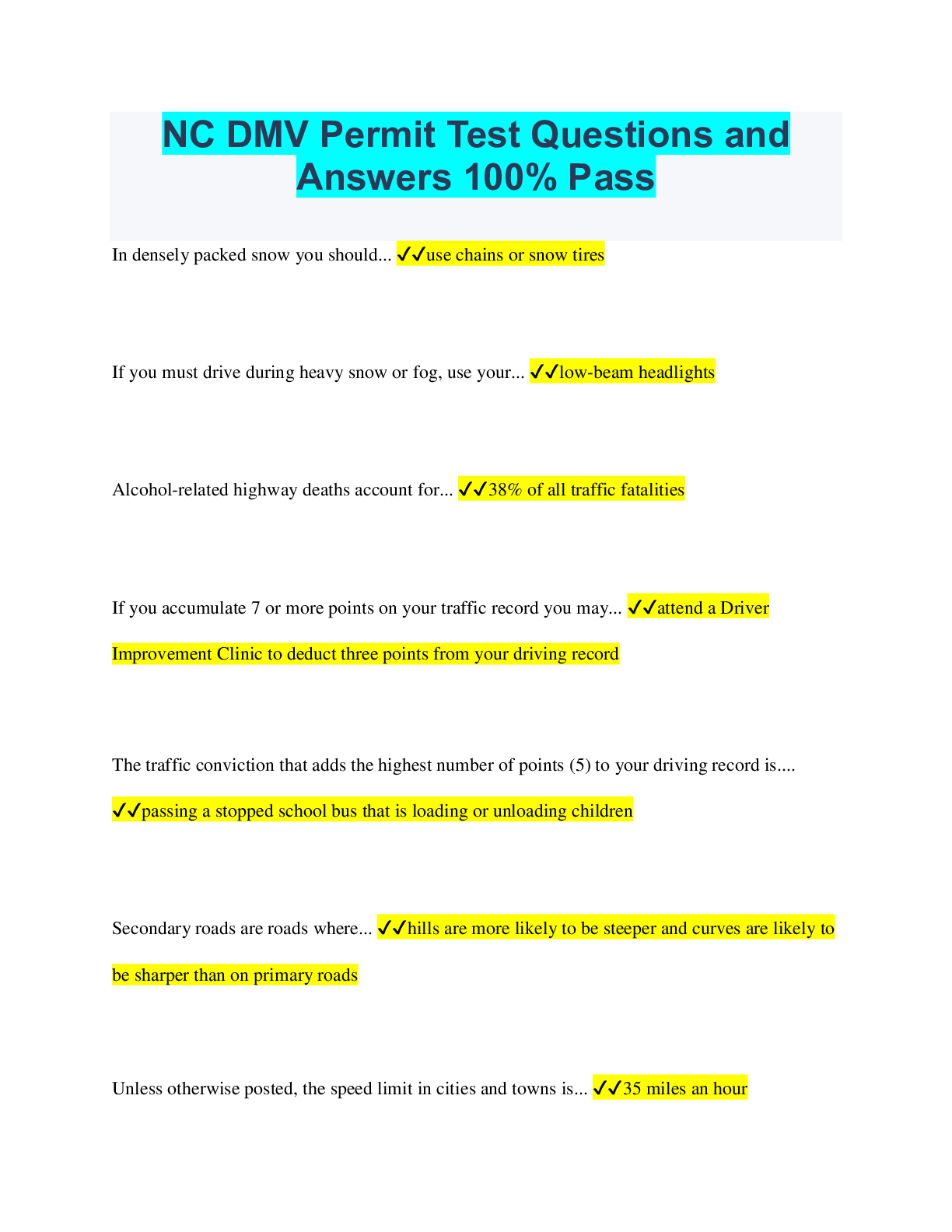
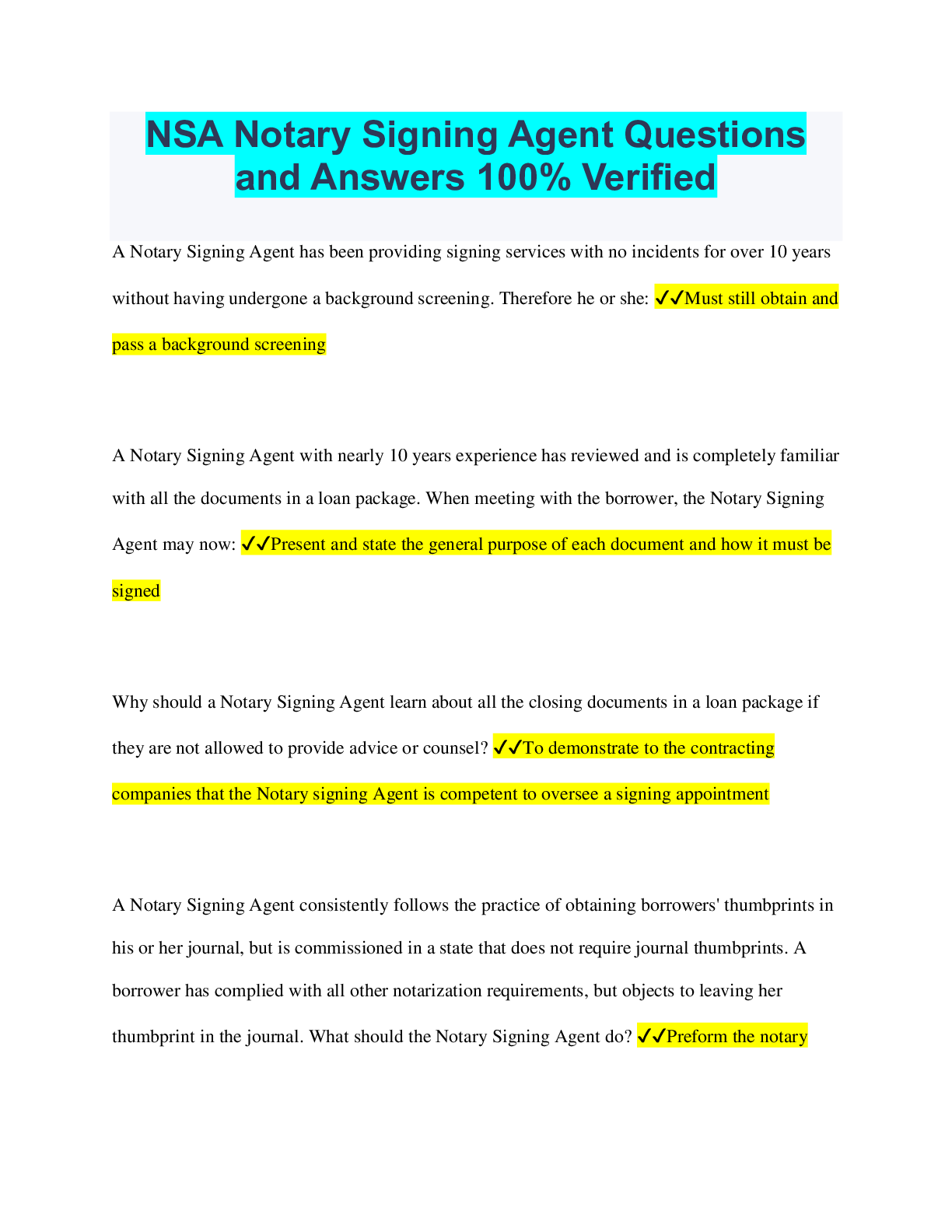
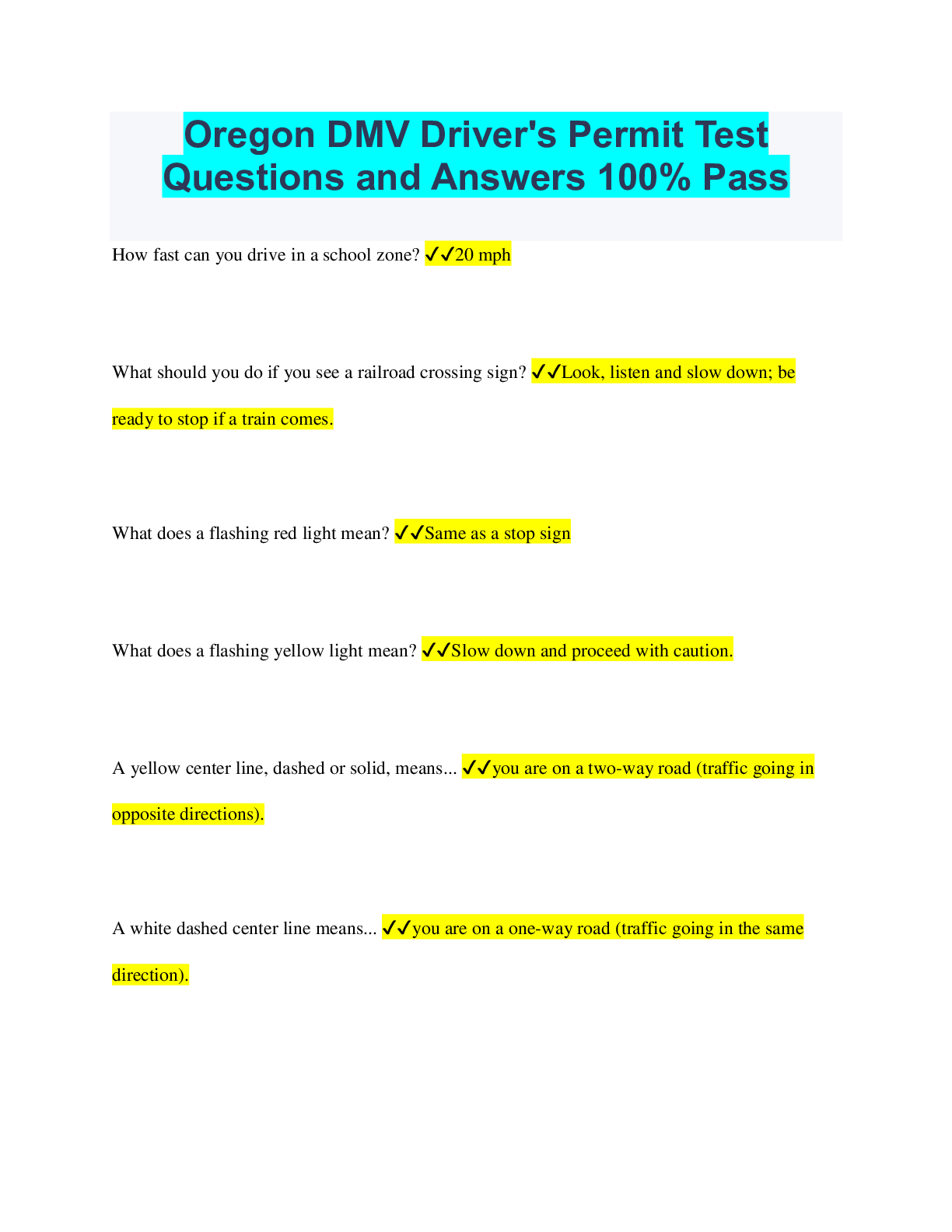
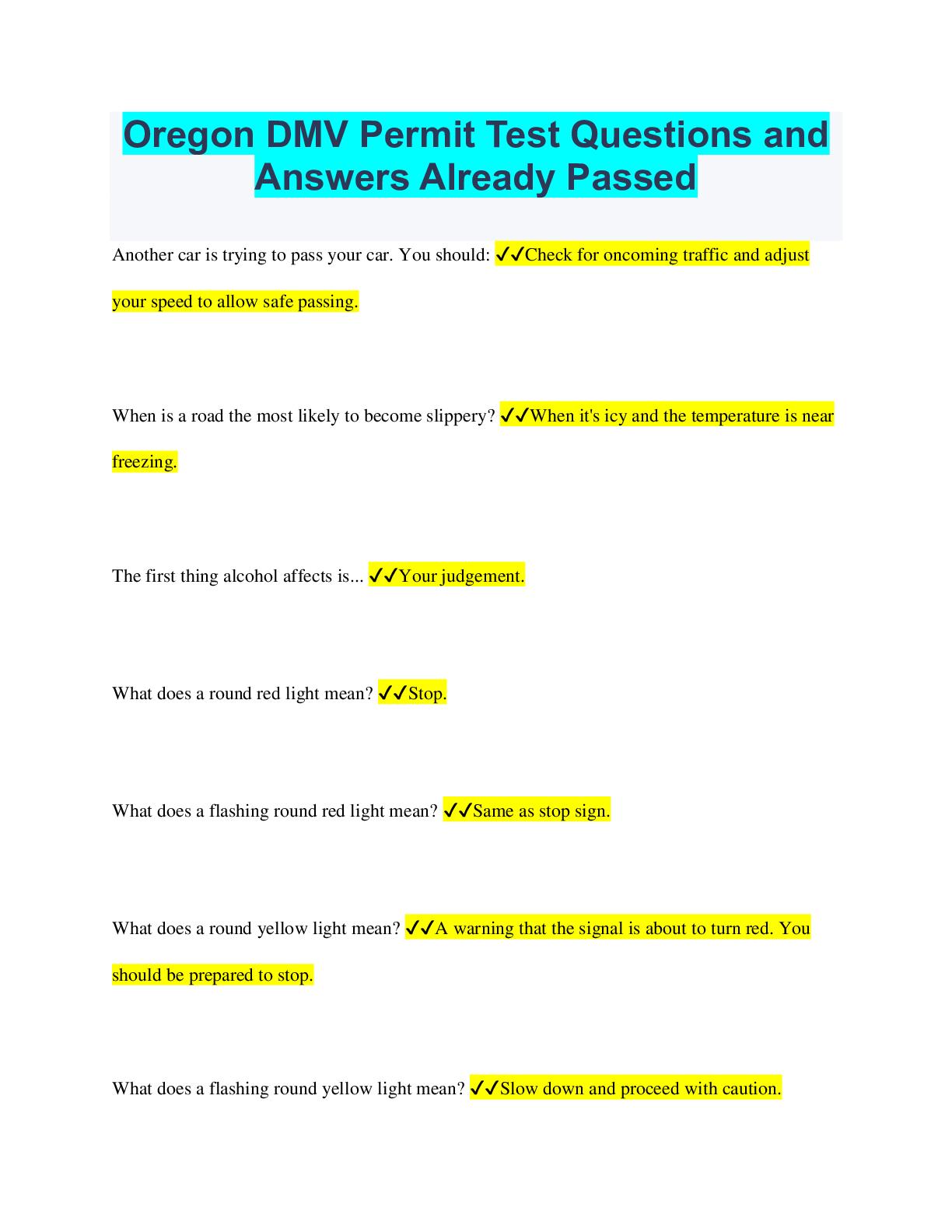
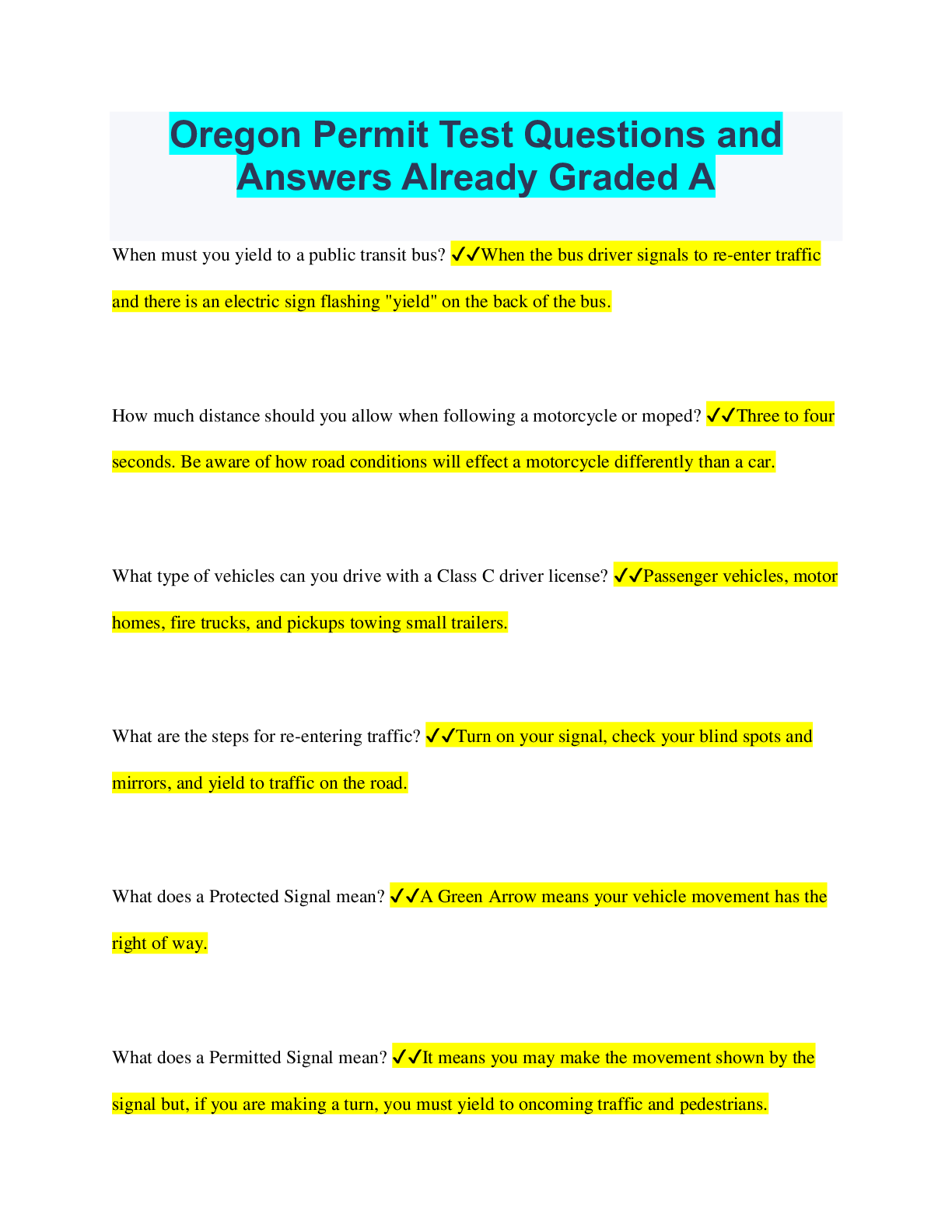
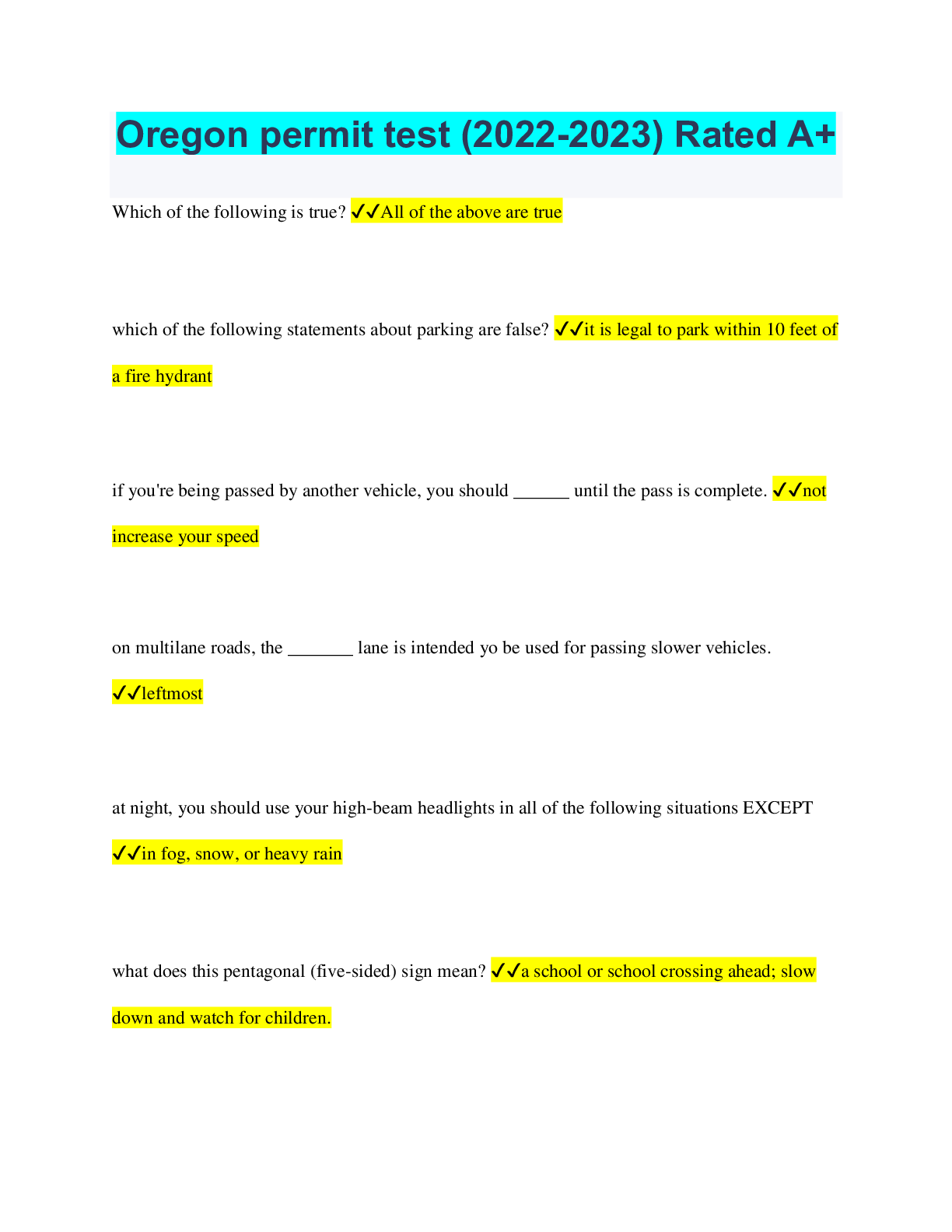
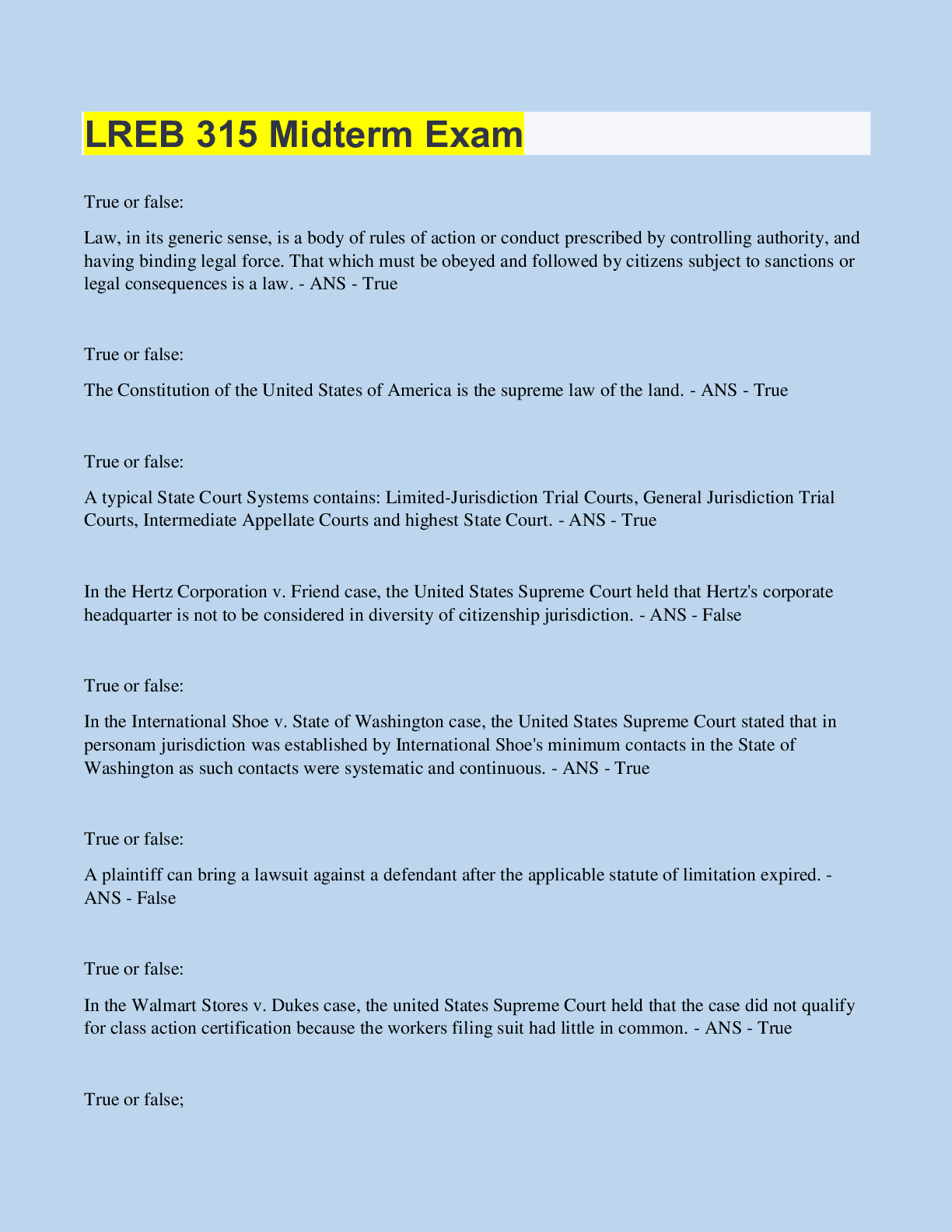
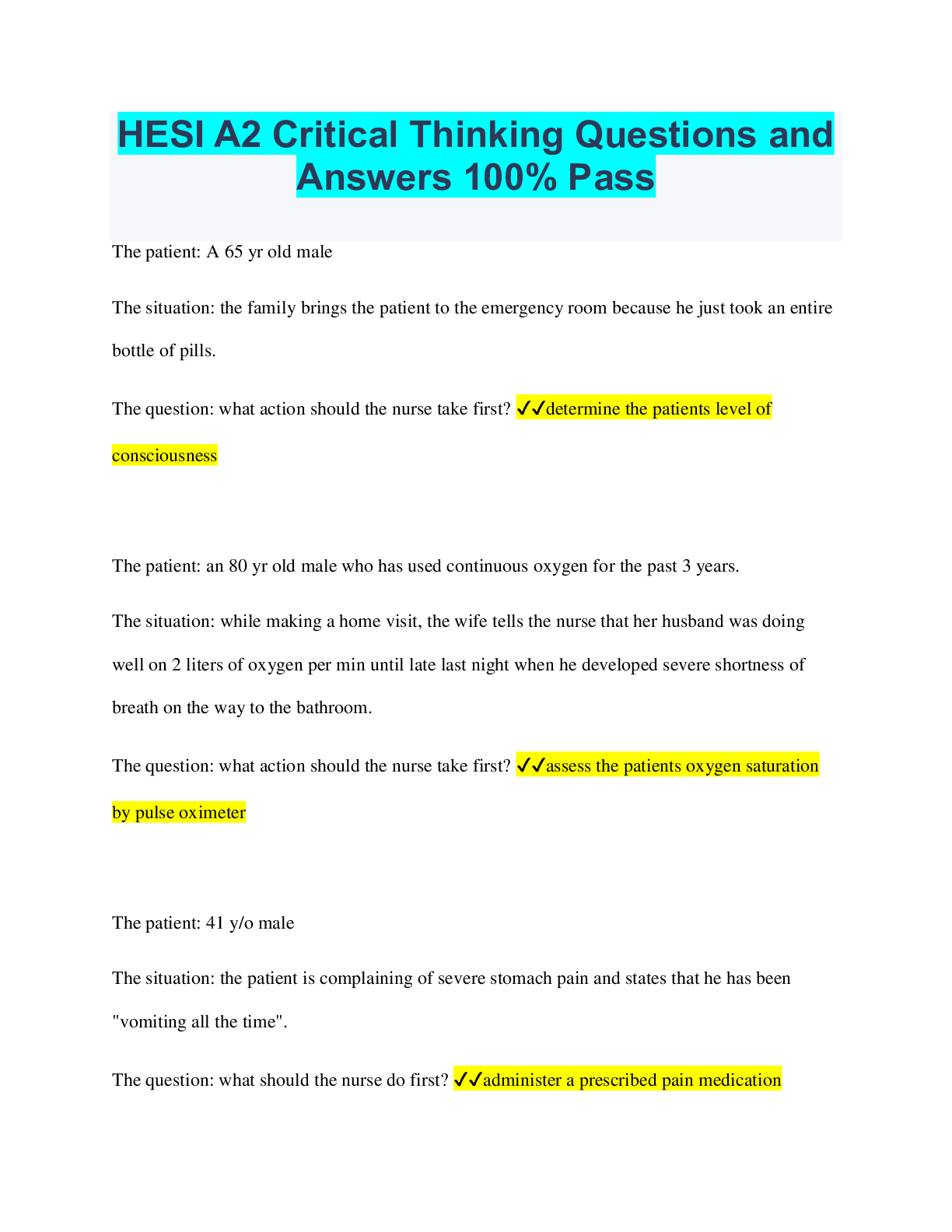
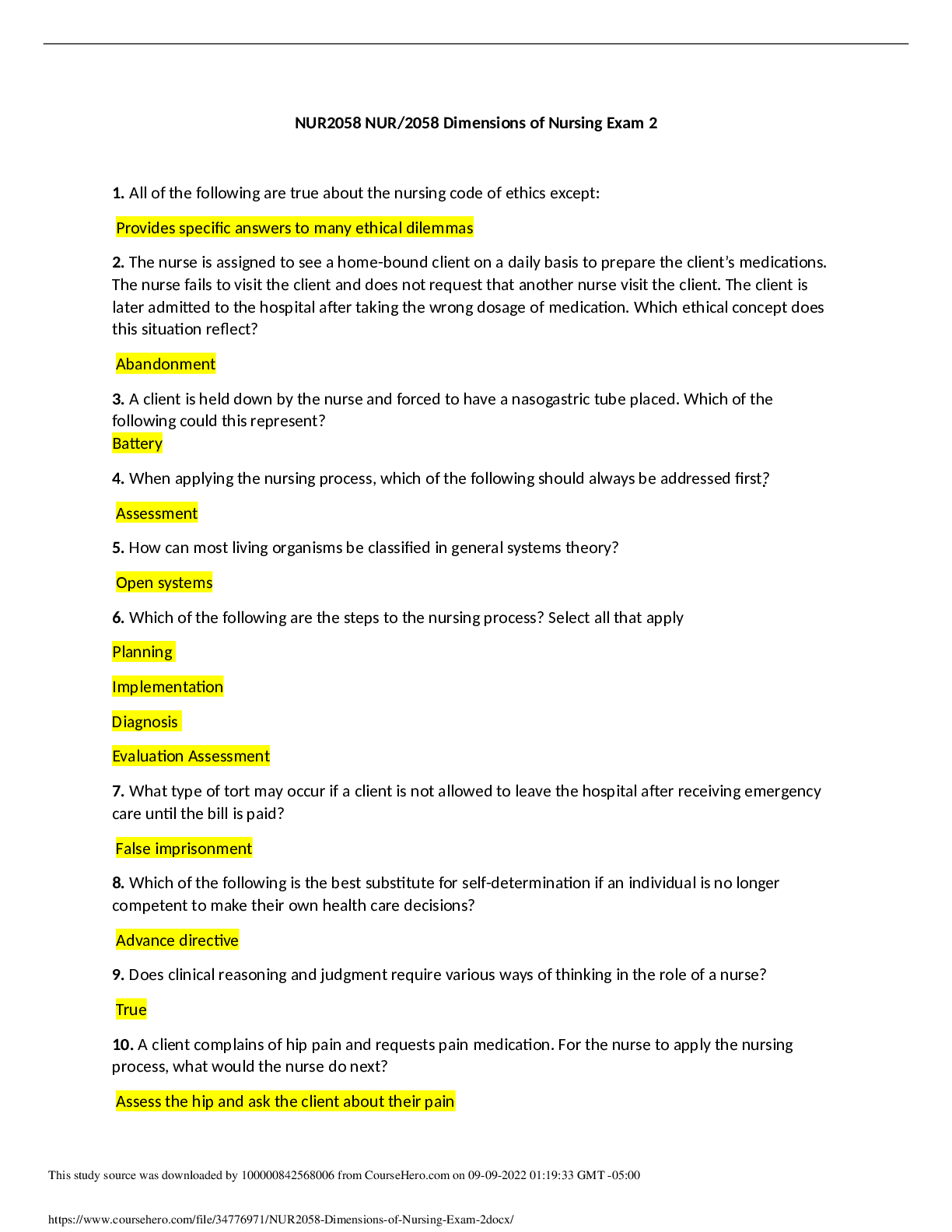
.png)

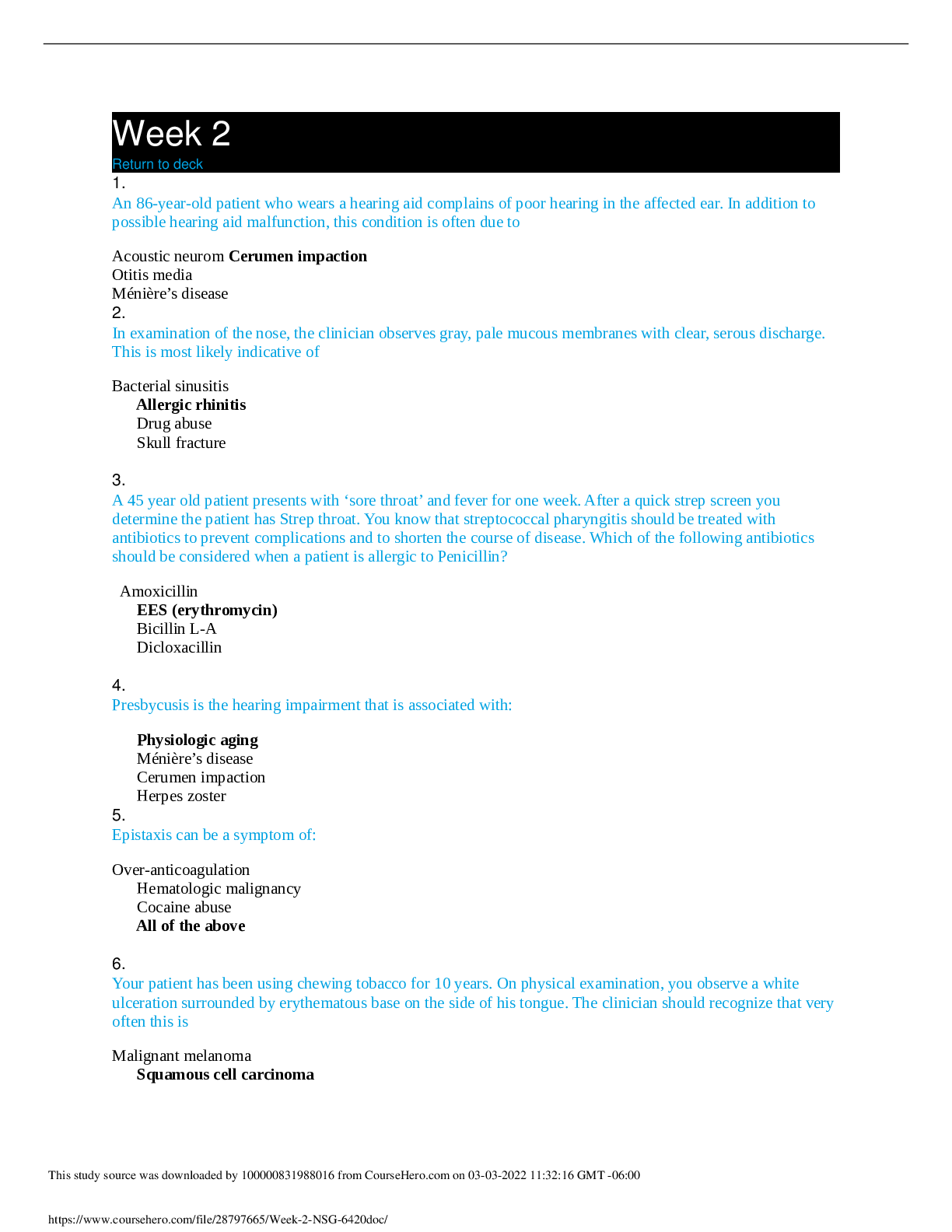
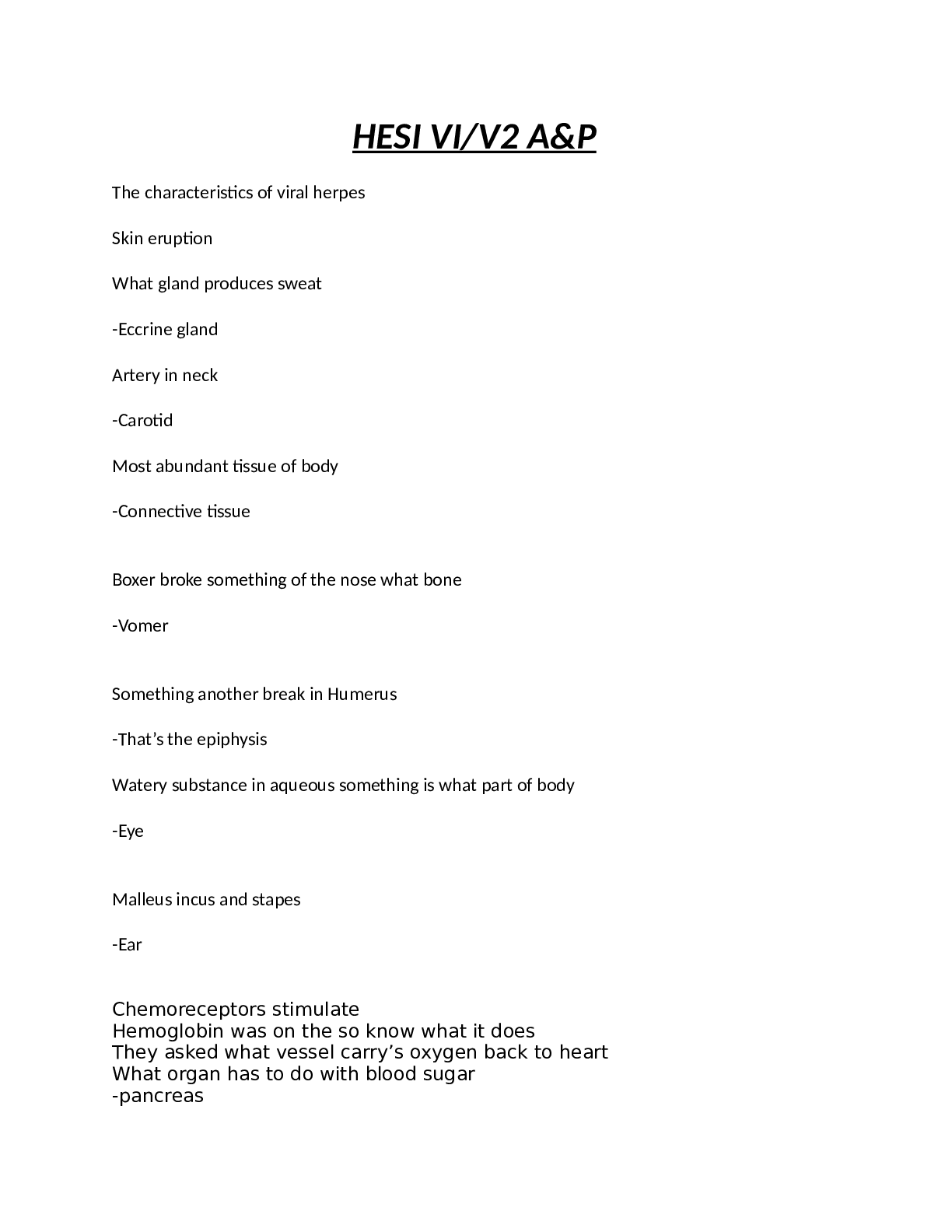


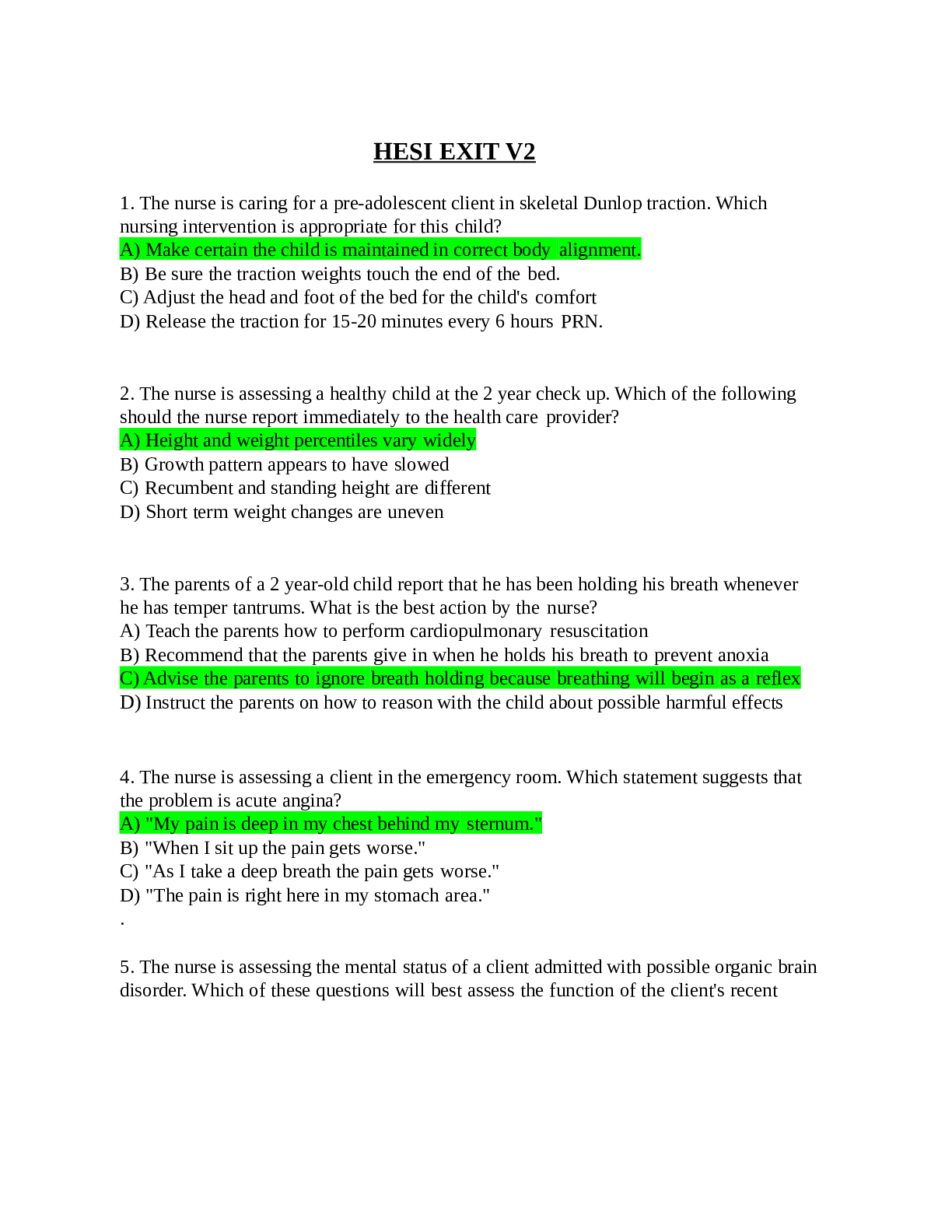
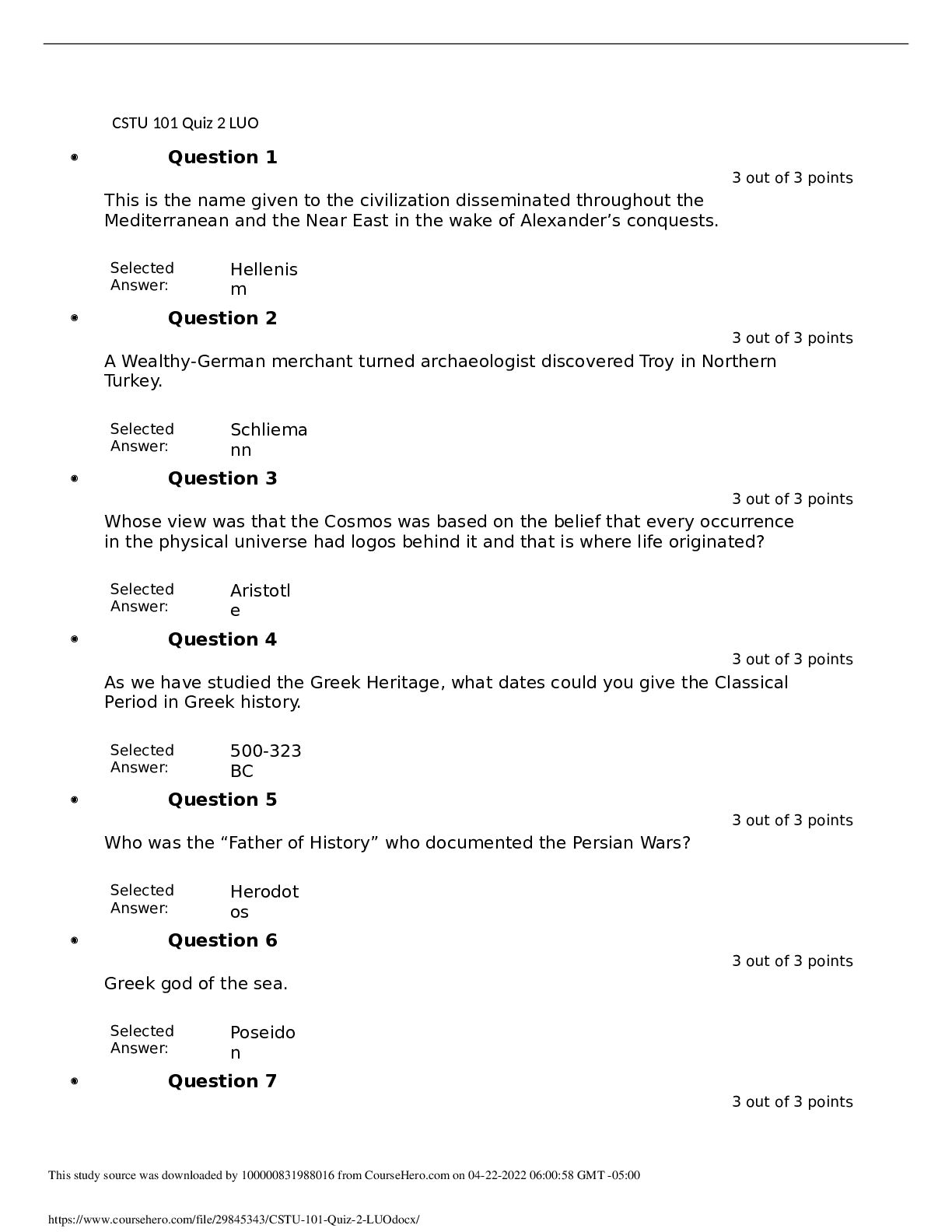

.png)


